#The Columbian
Explore tagged Tumblr posts
Photo
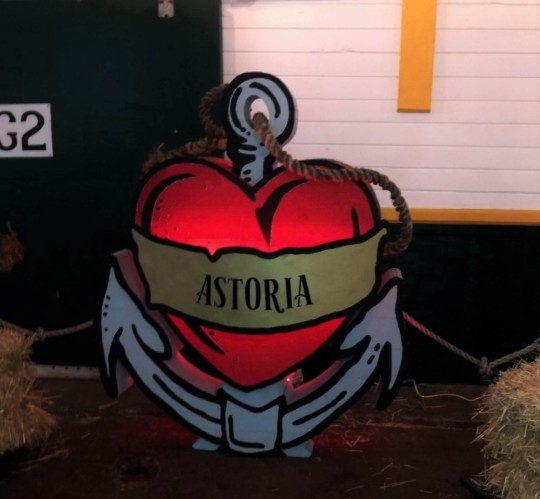








#signs#astoria#coastal#pier#ocean#sea#ammonia#the columbian#pnw#pacific northwest#pacific coast#kindergarten cop#moodboard#weird signs#sea lions#seapunk#lighthousecore#oregon#the west coast#the goonies#goonies#astoria oregon
40 notes
·
View notes
Text
I don’t always share news stories but sometimes Samsung News throws a curveball story at me that I decide to investigate. Look at this.

Of course police say he went “on a crime spree”, I don't know what that part truly means. But like.
This is hilarious, and they even included pictures!



This is the best way to avoid custody.
I thought Tumblr might appreciate this under our category of
I don’t think you should be arrested for objectively funny crimes
I hope y’all enjoy as much as I did 😂 ~Nico
2 notes
·
View notes
Text
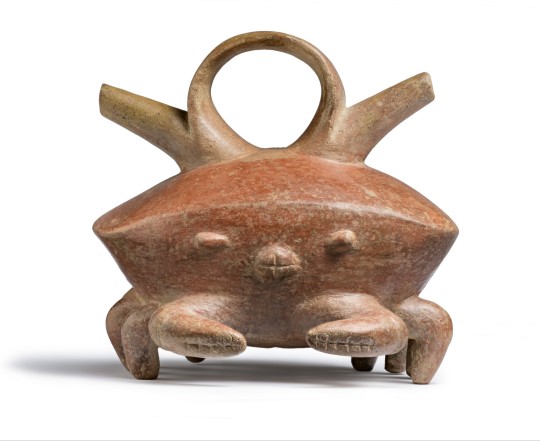
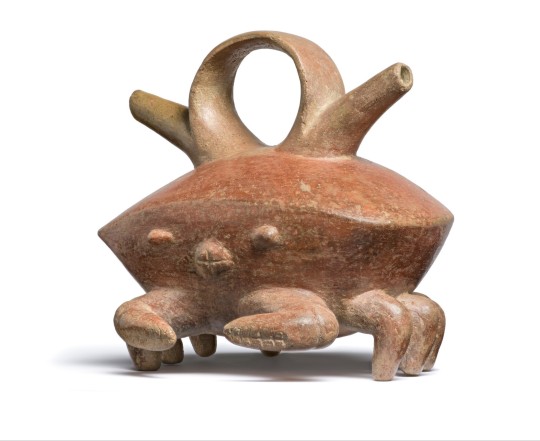
~ Crab Vessel with Double Spout.
Place of origin: Colombia, Calima Region
Period: Ilama Period
Date: 1500 B.C.-A.D. 100
Medium: Ceramics
#ancient#ancient art#history#museum#archeology#ancient history#archaeology#ancient pottery#pottery#south america#crab#crab vessel#calima#Colombia#pre columbian#Ilama Period#1500 b.c.#a.d. 100
22K notes
·
View notes
Text


Columbian Black-Tailed Deer | MRNP
#artists on tumblr#original photographers#original photography#hiking#pacific northwest#nature#washington#pnw#nikon#orofeaiel#animals#wildlife#deer#columbian black tailed#four legged friends#locals#fog#forest#landscape#moody
1K notes
·
View notes
Photo

The Columbian Exchange
1K notes
·
View notes
Text
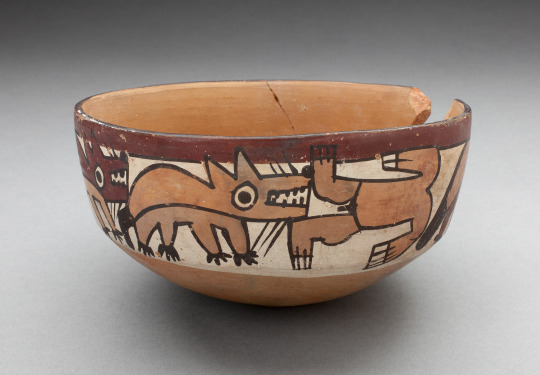
Bowl Depicting Foxes* Attacking Human
Nazca, 180 BCE–500 CE
5K notes
·
View notes
Text
500-year-old Snake Figure from Peru (Incan Empire), c. 1450-1532 CE: this fiber craft snake was made from cotton and camelid hair, and it has a total length of 86.4cm (about 34in)

This piece was crafted by shaping a cotton core into the basic form of a snake and then wrapping it in structural cords. Colorful threads were then used to create the surface pattern, producing a zig-zag design that covers most of the snake's body. Some of its facial features were also decorated with embroidery.

A double-braided rope is attached to the distal end of the snake's body, near the tip of its tail, and another rope is attached along the ventral side, where it forms a small loop just behind the snake's lower jaw. Similar features have been found in other serpentine figures from the same region/time period, suggesting that these objects may have been designed for a common purpose.

Very little is known about the original function and significance of these artifacts; they may have been created as decorative elements, costume elements, ceremonial props, toys, gifts, grave goods, or simply as pieces of artwork.
The Metropolitan Museum of Art argues that this figure might have been used as a prop during a particular Andean tradition:
In a ritual combat known as ayllar, snakes made of wool were used as projectiles. This effigy snake may have been worn around the neck—a powerful personal adornment of the paramount Inca and his allies—until it was needed as a weapon. The wearer would then grab the cord, swing the snake, and hurl it in the direction of the opponent. The heavy head would propel the figure forward. The simultaneous release of many would produce a scenario of “flying snakes” thrown at enemies.
The same custom is described in an account from a Spanish chronicler named Cristóbal de Albornoz, who referred to the tradition as "the game of the ayllus and the Amaru" ("El juego de los ayllus y el Amaru").
The image below depicts a very similar artifact from the same region/time period.

Why Indigenous Artifacts Should be Returned to Indigenous Communities.
Sources & More Info:
Metropolitan Museum of Art: Snake Ornament
Serpent Symbology: Representations of Snakes in Art
Journal de la Société des Américanistes: El Juego de los ayllus y el Amaru
Yale University Art Gallery: Votive Fiber Sculpture of an Anaconda
#artifacts#archaeology#inca#peru#anthropology#fiber crafts#americas#pre-columbian#andes#south america#art#snake#effigy#textiles#textile art#embroidery#history#stem stitch#serpent#amaru#mythology#andean lore#fiber art#incan empire#indigenous art#repatriation#middle ages#flying snakes tho
921 notes
·
View notes
Text










Picnics
@_isabella
@thicksexyasswomen46🍒🍒
413 notes
·
View notes
Text

Think I'm starting to get sick, but in other news: Meet Typhon!
458 notes
·
View notes
Text

Mammoth Tusk Discovered in Mississippi
Scientists in Mississippi announced a major fossil discovery in the state!
According to the Mississippi Department of Environmental Quality (MDEQ), the agency’s Mississippi State Geological Survey scientists received a message about a the discovery made by Eddie Templeton, an avid artifact and fossil collector. Templeton was exploring in rural Madison County earlier this month when he stumbled upon what appeared to be a portion of an ice-age elephant tusk exposed in a steep embankment.
Mississippi was home to three Proboscideans during the last ice age: Mastodon, Gomphothere, and the Columbian mammoth. All three possessed ivory tusks.




Officials said Mastodons are the most common Proboscidean finds in Mississippi. Mammoths, which were related to modern elephants, are far less common finds in Mississippi.
When Templeton and the State Survey paleontological team arrived to the fossil site, they found the fossil tusk in amazing condition and was only partially exposed just above the water under a bluff in the alluvium of a small drainage. It was suspected based on the strong curvature of the massive tusk that they were dealing with a Columbian mammoth and not that of the more common mastodon. Officials said this would be the first of its kind for the area.
The team was able to carefully remove the clayey sand from around the tusk to expose the seven-foot long fossil. The tusk had been deposited entirely intact. MDEQ officials said most fossil tusk ivory found around the state are just fragments and most are likely to be attributable to the more common mastodon.
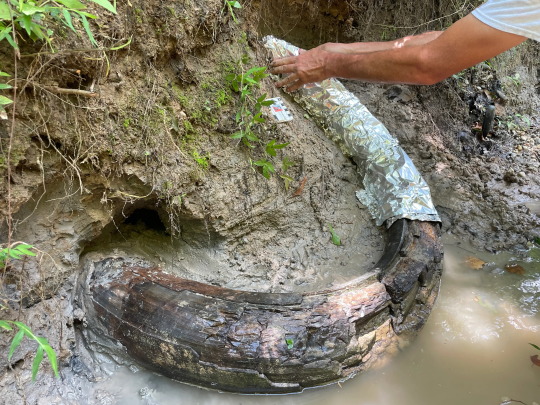

The fossil was taken to the Mississippi Museum of Natural Science in Jackson for further curation and careful study. It was confirmed by a museum paleontologist as belonging to a mammoth.
Officials said the discovery offers a rare window into the Columbian mammoths that once roamed Madison County along the Jackson Prairie of central Mississippi. Columbian mammoths were much larger than the infamous woolly mammoth that roamed the colder, more northern regions of North America. They grew up to 15 feet at the shoulder and could weigh more than 10 tons.

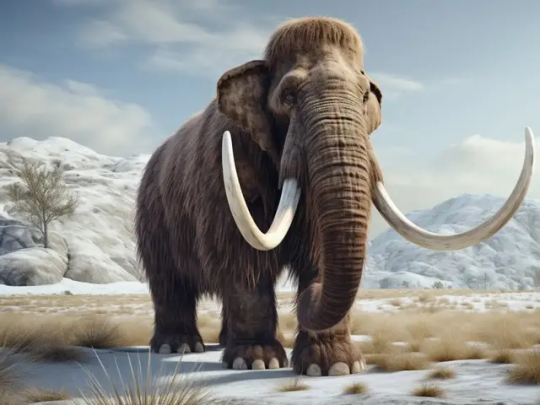
#Mammoth Tusk Discovered in Mississippi#Madison County#mammoth#Columbian mammoth#Gomphothere#Mastodon#fossil#paleontology#paleontologist#archeology#archeolgst#history#history news
291 notes
·
View notes
Text

~ Skull Necklace.
Culture: Aztec
Period: Late Postclassic
Date: A.D. 1200-1520
Medium: Shell
#13th century#16th century#aztec#history#museum#archeology#archaeology#jewelry#Mesoamerica#mexico#mexican#pre columbian#late Postclassic#shell#necklace#skull#skull necklace#a.d. 1200#a.d. 1520
3K notes
·
View notes
Text

"ESPERANZA FERNÁNDEZ VARGAS" RUVÉN AFANADOR | SPAIN, 2008 [archival pigment print | 40 x 30"]
#ruvén afanador#surreal#black and white#monochrome#contemporary art#spain#00s#columbian#photography#u
266 notes
·
View notes
Text
Americas, Pre-Columbian Era: In the history of the Americas, the pre-Columbian era, also known as the pre-contact era, spans from the initial peopling of the Americas in the Upper Paleolithic to the onset of European colonization, which began with Christopher Columbus's voyage in 1492. .. The vastness of the North American continent, and the variety of its climates, ecology, vegetation, fauna, and landforms, led ancient peoples to coalesce into many distinct linguistic and cultural groups. The Woodland period of North American pre-Columbian cultures lasted from roughly 1000 BCE to 1000 CE. Wikipedia
132 notes
·
View notes
Text
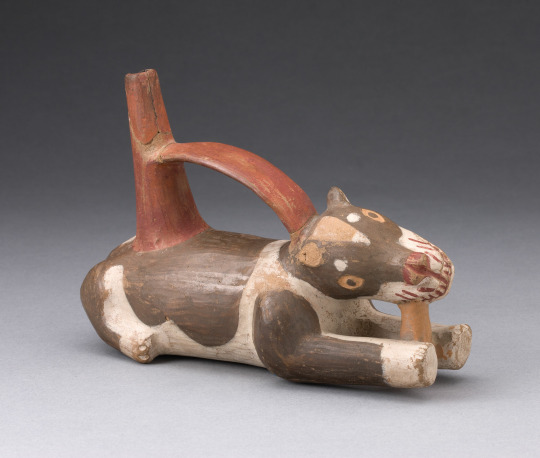
Single Spout and Bridge Vessel in the Form of a Dog Gnawing a Bone
Tiwanaku-Wari, Peru or Bolivia, 700–1000
2K notes
·
View notes
Text

Mammuthus columbi, the Columbian mammoth, by Zdenek Burian.
Probably one of my favorites from Burian’s elephants. I love the sense of motion and action, the size and majesty of the rearing mammoth, and the microstory it seems to be telling.
801 notes
·
View notes
Text

An erotic pre-Columbian figurine from the Tairona culture, made using the Tumbaga technique
581 notes
·
View notes